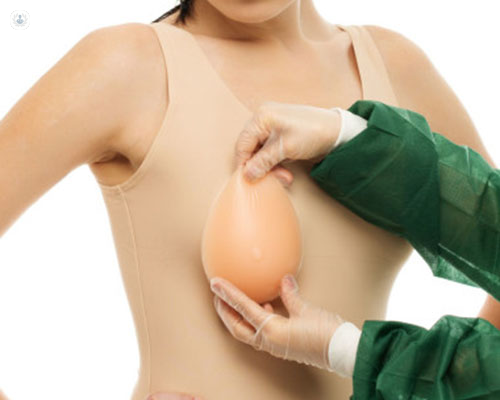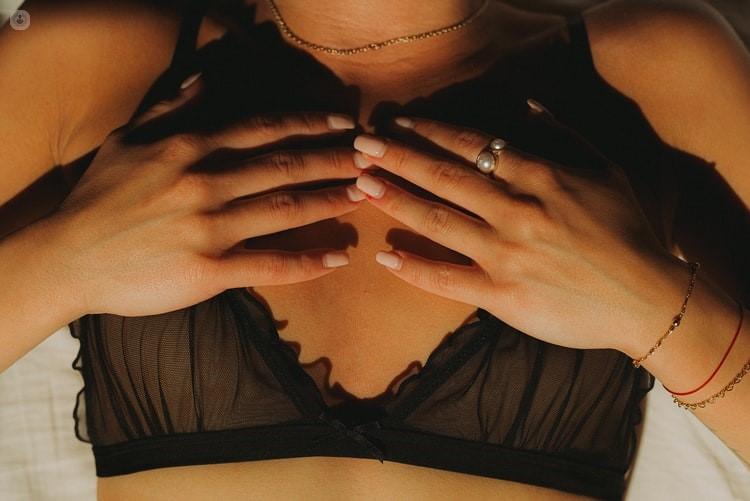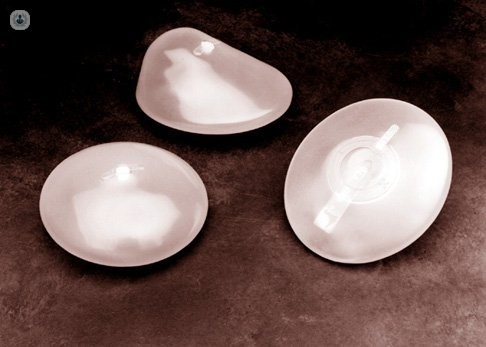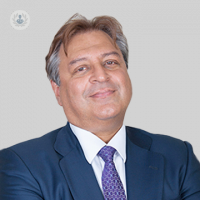Breast augmentation: how to choose the right implants
Written by:Every woman deserves a beautiful bust. However, some women never develop a generous bust, and even for those that do, the breasts do not always keep their shape for life. Children are an amazing gift, but after pregnancy and breast feeding, a handful of women can suffer loss of volume, of shape, and may even experience sagging and droopiness.
Mr Tariq Ahmad is an award-winning plastic and cosmetic surgeon, and here he explains why some women might opt for a breast augmentation and how he decides which implants are right for his patients.

Why might some women choose to have breast augmentation?
For some women, the profile and volume of their breasts is a concern. It can lead to some becoming quite self-conscious, can affect self-confidence, and for some, have a significant impact on their feeling of femininity. For others, it can sometimes hold them back in terms of finding a partner or can also even affect intimacy with their partner. If these are issues for you, I have a wealth of experience to gently guide you so that if you do feel as though you would like to choose breast augmentation, you can make an informed choice and be confident that whatever decision you make, it is the right one for you.
How do you decide which implants are right for the patient?
The first breast implant was placed in 1962 in the U.S.A. Since then, we have come a long way, but it is true that there have been ups and downs, but also several generations of implants. With each generation there have been major improvements.
So, we now have a number of choices, the three main things to consider are:
- the surface of the implant
- the content or filler of the implant.
- the shape or profile of the implant.
The original implants were smooth walled silicone bags that were filled with silicone gel. Silicone was chosen as it was known to be an inert substance that did not interact with tissues. It is still used in a variety of other implants, not just those for breasts.
Implants today have thick walls to reduce the risk of rupture and can be smooth surfaced or textured (rough). There are various advantages and disadvantages of each and I will be able to go through all of these with you at your consultation. The latest implants are ‘nano’ textured, which means that they can look and feel smooth, but microscopically are rough-surfaced, which simply means that they have some of the advantages of smooth as well as rough-surfaced implants.

Can breast implants rupture?
The content of the implant can be saline which is then injected into the implant via a valve during the procedure, or silicone. If implants are going to rupture, then saline-filled implants tend to rupture earlier, but if they do, then all that happens is that the saline (salt water) inside them leaks out, and the breasts can deflate, like a punctured balloon and sometimes overnight.
The vast majority of patients choose silicone as the filler, and modern implants have some version of a cohesive gel. Cohesive gel means that, even if the implant were to rupture, the silicone tends to stay locally within the capsule around the implant. The capsule is like a sheath that the body weaves around any foreign body, including breast implants.
Is there a type of implant that you would recommend?
I will take you through the implant types and help you choose what is right for you. At the time of writing, I recommend Motiva implants, which are nano-textured, optimally filled so that there is less chance of rippling as seen through the skin for some patients. They can also be placed through a much smaller incision than other implants, so often leaving only a 2.5 – 3cm scar.
Are breast implants safe?
There have been a number of issues surrounding breast implants. One can never acurately predict what can happen in the future, but extensive research and various other sources of information continue to be accumulated so that every year we can be more confident that we update our knowledge with regards to implants and their various benefits and risks.
Breast implants must now be manufactured to very strict standards, but a breast implant, like any implant placed in the body, cannot be guaranteed to last a lifetime, and different types of implant are of course associated with different issues.
Is there a link between breast implants and breast cancer?
Studies show that silicone is generally safe when placed inside the body. Breast cancer has been one of the most significant worries for women as up to one in eight women in the UK can be affected by this during their lifetime. It is reassuring, though, that all of the evidence suggests that there is no link between breast implants, silicone, and breast cancer. In fact, there may be emerging evidence which hints at silicone implants possibly having a minor protective effect against getting breast cancer.

What is the risk of breast implants?
The main risk of implants is that the capsule (a sheath woven around any type of implant placed into one’s body to ‘wall it off’) could become firm or even hard, something known as capsular contracture. Again, different implant types are associated with different incidences of contracture. I will be able to guide on the incidence of contracture with Motiva implants, which is my preferred recommended make of implant for most patients, which have a very low incidence of in and around one per cent of capsular contracture.
Implants can rupture, and if you wait long enough, they would probably eventually all rupture. With cohesive silicone gel implants, however, the silicone tends to stay within the confines of the capsule, and occasionally, patients do not even realise that their implant is ruptured, as it does not really affect them. For others, on the other hand, it can cause symptoms, in which case, the implant would of course need to be replaced.
There are a couple of newer concerns in relation to breast implants. One of these relates to a type of cancer, ALCL, which is quite rare (the latest advice is that it may occur in one in 25,000 women who have breast implants) and for most patients it is very much treatable.
The latest evidence suggests it may be related again to the type of implant, and so far, despite one million implants currently existing within the market, there have been no patients with Motiva implants who have suffered from ALCL to-date.
The other most recent concern is in relation to a relatively new condition related to breast implants that seems to cause a type of breast implant illness for some women who have had implants placed. It is not (as of yet) even defined as an illness or disease, but affected women do seem to be severely debilitated by it. Fortunately, it is also very rare, and seems to be reversible by simply removing the implant.
If you are considering breast augmentation and would like help in determining which implants are for you, book an appointment to see Mr Ahmad now.


